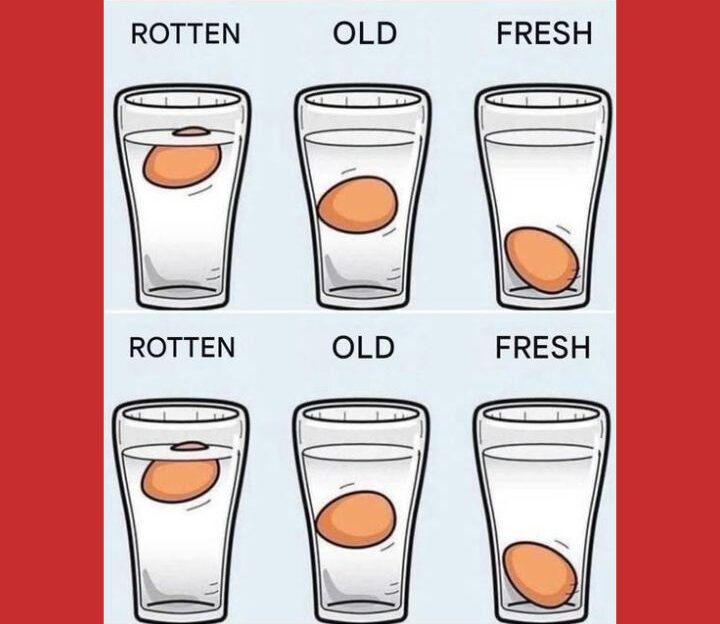Note: While floating usually signals spoilage, it’s still smart to crack the egg open and check for smell or unusual appearance if in doubt.
Other Simple Ways to Check for Freshness
Though the float test is the most accurate, there are a few other quick checks you can use:
The Smell (Sniff) Test
The easiest and most obvious method: a bad egg smells bad. A rotten egg has a strong, foul odor, often likened to sulfur.
To do this test:
1. Crack the egg into a bowl.
2. Take a quick sniff. If it smells off or sour, toss it immediately. A fresh egg has no noticeable smell.
The Shake Test
Hold the egg up to your ear and gently shake it.
If you don’t hear anything, the egg is likely fresh.
If you hear sloshing, it’s a sign the inside has become watery over time, indicating it’s older.
Eggs are an essential food in many diets around the world. Used in breakfasts, lunches, and desserts, they are an excellent source of protein and essential nutrients. But what is the difference between brown eggs and white eggs? In this article, we analyze their characteristics to help you choose the best one for you.
Differences between brown eggs and white eggs
Shell color
The most notable difference is the color. White eggs come from hens with white feathers and white earlobes, while brown eggs are laid by hens with brown or reddish feathers and red earlobes.
Nutritional value
Despite popular belief, brown and white eggs have similar nutritional compositions. Both contain equivalent amounts of protein, fat, vitamins, and minerals. Egg quality is more influenced by the hen’s diet and environment than by shell color.
Are brown eggs healthier?
Not necessarily. Many people associate brown eggs with a more natural or organic diet, but this isn’t always true. Egg quality depends on the animal’s well-being and diet, not on the color of the shell.
Continued on next page 👇(page 3)👇
